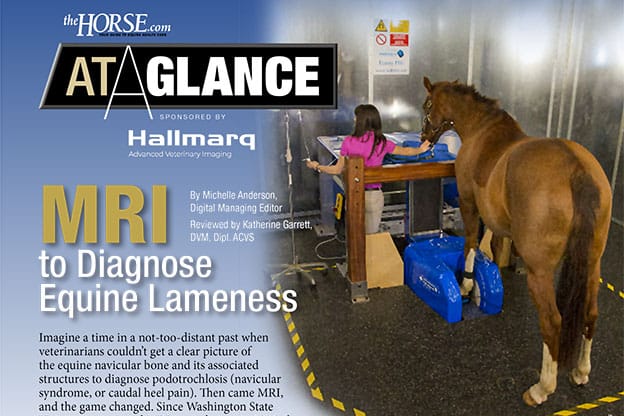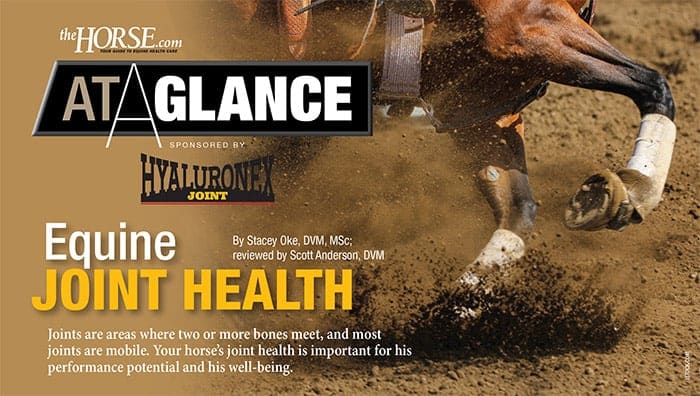
At a Glance: MRI to Diagnose Equine Lameness
MRI has become easier to use and more accessible. Using this diagnostic tool early leads to improved outcomes for lame horses. Sponsored by Hallmarq Veterinary Imaging.
Prevention, diagnosis, and treatment of leg lameness

MRI has become easier to use and more accessible. Using this diagnostic tool early leads to improved outcomes for lame horses. Sponsored by Hallmarq Veterinary Imaging.

An expert lists four broad PT categories and describes the many techniques within each that can help horses recover from injury and improve their performance.

A Norwegian and Swedish study shows that autologous conditioned serum with higher levels of certain biological anti-inflammatories and growth factors is more likely to reduce lameness in treated horses.

Biomechanics expert: The wrong rehab program for a horse can be counterproductive.

Read about the existing science behind acupuncture and what you should know before scheduling an appointment for your horse.

Laminitic horses try to keep off their painful toes as much as possible. But as a new biomechanics study shows, they can’t—at least not all the time.

Horses experience changes in force on their bodies and limbs when they turn. This can affect lameness exams, making them look both more and less lame. And should racetracks be banked?

Get an update on the use of stem cells in horses and research leading us into the future.

Dr. Amanda Adams of the University of Kentucky, in Lexington, describes her senior horse research, which focuses on EMS, PPID, and immune system health.

Two fillies with facial fractures went on to high-performance careers after undergoing successful surgeries to repair their sinuses. Veterinarians based the technique on one used to repair human skull fractures.

A study led by Dr. Sue Dyson found signs of lameness in 73% of horses riders identified as sound. Also, nearly 50% of the horses’ saddles showed signs of poor fit.

Sesamoid injuries in horses can be difficult to repair and even catastrophic; here’s what can go wrong and how to prevent it from happening.

Also known as “forging,” horses with overstrides can injure themselves and pull shoes when their hind feet make contact with their front legs. A vet offers advice on how to prevent problems.

Preserving your horses’ joint health will optimize their athletic careers and keep them comfortable as they age. Sponsored by Hyaluronex Joint.

Learn about the science behind creating safe racing surfaces from Mick Peterson, PhD, director of the University of Kentucky’s Racetrack Safety Program.

With a custom-made splint holding the bent knee in place and partially supporting the horse’s weight, equine surgeons can now perform needle arthroscopy in standing, sedated horses.
Stay on top of the most recent Horse Health news with
"*" indicates required fields